#bird genoscape project
Text

A new species complex for @birdgenoscape project, the Dark-Eyed Junco, in Slate-Colored, Oregon, Grey-Headed, Red-Backed, Pink-Sided, and White-Winged forms. Does anyone know why it has diversified into so many morphologically distinct groups?
189 notes
·
View notes
Text
Help address current and future challenges facing migratory birds
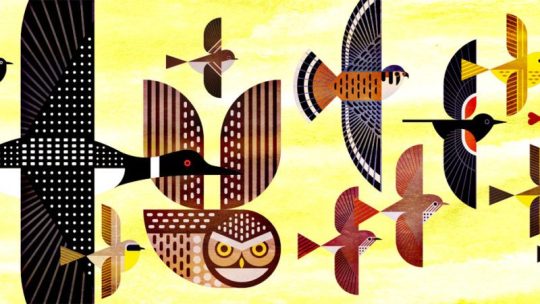
Neotropical migratory birds are declining across the Western Hemisphere, but conservation efforts have been stalled by the inability to assess where migrants are most limited – the breeding grounds, migratory stopover points, or tropical wintering areas. Historically, efforts to correlate breeding, wintering, and migratory populations have relied on large – scale banding programs or small tracking devices, however, these efforts have met with limited success because recapture of small – bodied birds is rare. Thus, there is an urgent need for a tracking technology that is minimally invasive, reliable, and capable of characterizing migratory patterns on a broad scale.
CTR has developed a a high-resolution molecular tag for tracking migratory birds on hemispheric scales. We are using this approach to create genetic maps, or “genoscapes” of 10 migratory bird species, and hope to expand to 100 species.
We are working with a variety of government and non-profit partners to expand the development of high-resolution molecular tags to species and populations of conservation concern across the Western Hemisphere. The resulting information can be used to help address current and future challenges facing migratory birds.
#Bird Genoscape Project#migratory birds#Center for Tropical Research#bird conservation#tracking technology#Neotropical migratory birds#research
0 notes
Text
Scott Partridge Art- Bird Genoscape Project Art


The geometric form of nature that is anything but geometric made me intrigue with Scotts colourful prints. The bird genoscape project considers bird watching and their flight from one place to another. His website has other really cool projects also. He is not such a famous artist but I believe this anonymity at point really works for him.
0 notes
Text
The Bird Genoscape Project uses genetic diversity to inform conservation
The Bird Genoscape Project uses genetic diversity to inform conservation
Warbler Wilson. Photo: Mick Thompson
While tracking technology or encountering banded birds is often highlighted as ways to understand the movements of migratory birds, many birds are too small to carry trackers, as well as . Fortunately, there are other research techniques that offer similar insights. One example is the use of genetic information to reveal patterns of migratory contact across…
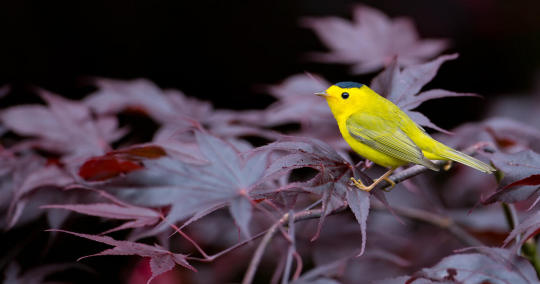
View On WordPress
0 notes
Text
Postdoc: UCalifornia_Davis.AvianConservationGenomics
POSTDOCTORAL RESEARCHER IN AVIAN CONSERVATION GENOMICS: We are seeking a postdoctoral researcher with expertise in conservation genomics, population genetics, avian physiology, and/or evolutionary ecology. The successful candidate will be part of an NSF funded project that combines genomic data with physiological experiments and morphological measurements to understand climate adaptation in birds. We seek a creative and highly motivated individual to work closely with a multi-disciplinary team of technical staff, graduate students, senior researchers, post-docs, and faculty to carry out field experiments, develop bioinformatic pipelines, and analyze population genomic data. The postdoc will be encouraged to develop his/her own research project that furthers our understanding of the potential for adaptation to climate change in birds. The postdoc will be based in Rachael Bay$B!G(Bs lab (http://bit.ly/2Q6XkzT) in the Department of Evolution and Ecology at UC Davis. This project is a collaboration with Kristen Ruegg (Colorado State University), and Blair Wolf (University of New Mexico) and part of the Bird Genoscape Project (http://bit.ly/2M2QKXK). QUALIFICATIONS: - A Ph.D. in Evolution, Ecology, or a closely related field - Experience using bioinformatic pipelines to analyze genetic or genomic data - Preferred field experience in avian ecology and/or physiology - Demonstrated ability to follow through on project deliverables and communicate findings in high quality peer-reviewed journals. - Strong statistical skills and demonstrated proficiency with R or another statistical program. - Strong attention to detail, evidenced by prior research. SALARY: Salary and benefits are consistent with UC Davis policy and applicant experience. Current salary for a 1st year Postdoc is $49,188. TO APPLY: Interested candidates should submit a CV, the names and contact information for three potential references, and a cover letter explaining the candidate$B!G(Bs interest in the position and how their past research and future research goals fit within the position. All materials should be submitted in PDF format by email to [email protected], with the subject header $B!H(BAvian Conservation Genomics Postdoc$B!I(B. Applications received by October 15 will receive full consideration, but the position is open until filled and applications will be reviewed as they arrive. The position is available immediately, with a preferred start date sometime during the fall or winter 2018/19, although some flexibility in this start date is possible for the ideal candidate. Questions about the position should be directed to Rachael Bay . The University of California is an affirmative action/equal opportunity employer with a strong institutional commitment to the development of a climate that supports equality of opportunity and respect for differences. Rachael Bay
via Gmail
1 note
·
View note
Photo

How bird genetics adapt to climate change
As Earth's climate changes, species must adapt, shift their geographical ranges or face decline and, in some cases, extinction. Using genetics, UCLA biologists involved in the Bird Genoscape Project are racing against time to find out the potential for adaptation and how best to protect vulnerable populations of birds.
The project's most recent study, published in Science, focuses on the yellow warbler. Found across most of North America, the bird spends its winters in Central and South America, and flies as far north as Alaska and the Arctic Circle in the summer, filling wildlands and backyards with color and song along the way.
Using more than 200 blood, tissue and feather samples from across the breeding range, the researchers discovered genes that appear to be responding to climate, and found that bird populations that most need to adapt to climate change are experiencing declines.
UCLA evolutionary biologist Kristen Ruegg, adjunct assistant professor and senior author of the study, said previous studies focused on how long-term changes in temperature and precipitation cause bird species to shift their geographic ranges. Genetic mapping offers the opportunity to look at another option—the capacity to adapt to climate change.
"With this research, we can say 'based on these gene-environment correlations, here's how populations will have to adapt to future climate change. And here are the populations that have to adapt most,'" said Ruegg, who also is co-director of the Bird Genoscape Project.
Whether the yellow warbler will be able to adapt is another matter. "That's our next big question," Ruegg said.
The new study uncovered some of the challenges yellow warblers already face. In some populations, genes associated with climate adaptation are mismatched to environments. These populations will likely have the hardest time adapting quickly enough to future climate shifts.
That's been the case in the past, too. Comparing the genetic findings to breeding bird surveys dating back to the 1960s that track changes in bird abundance, the researchers determined that the populations that need to adapt most are already in decline. Using genetic maps, the habitats of the populations most vulnerable to climate change can now be targeted for protection, said Rachael Bay, lead author of the study and a National Science Foundation postdoctoral fellow. The findings offer valuable information for conservationists who hope to protect species like the yellow warbler in the future, she said.
#Yellow Warbler#Setophaga petechia#Setophaga#Parulidae#Passeroidea#Passerida#Passeri#Passeriformes#Psittacopasserae#Eufalconimorphae#Aves#birds#warbler#climate change#genetics#evolution
24 notes
·
View notes
Text
Can this bird adapt to a warmer climate? Read the genes to find out
http://bit.ly/2H00Oyv
Will the yellow warbler survive a changing climate? By Steve Byland/shutterstock.com
Many animals have adaptations that help them cope with specific environments or lifestyles. Antarctic fish produce antifreeze proteins that prevent their blood from freezing in subzero temperatures. Some desert rodents survive without ever drinking a single drop of water. Humans living at high altitudes have special adaptations to cope with the low oxygen concentrations.
These special adaptations are encoded in the genome and passed down from generation to generation. This information can help scientists project into the future as well: Reading an animals’ genes may help us anticipate if, and how, an organism might adapt to rapid changes in their environment, like those brought on by climate change. Understanding climate vulnerability at the level of an animal’s DNA could reveal which populations and species are more at risk, allowing us to match conservation efforts with at-risk species and expected climate scenarios.
I worked with a group of biologists associated with the Bird Genoscape Project who are concerned with the impact of a changing climate. We decided to investigate this question using yellow warblers. These migratory birds are found throughout most of Canada and the U.S. during the summer, inhabiting environments that range from the hot, dry Central Valley of California to the cool damp Pacific Northwest. If you live in North America, there are probably yellow warblers close by.
Rachael Bay, taking measurements on a bird caught in the field. Daniel Karp, CC BY-ND
Reading the DNA of yellow warblers
A genomic study like this one is a game of large numbers. First, we needed lots of samples from across the continent. Luckily, we got lots of help. Bird monitoring stations collected samples of yellow warbler blood for us, museums sent us samples, and other scientists dug up DNA they had in their freezers from past studies. When all was said and done, we had a large collection of both blood and feather samples from live birds as well as tissue samples from museum birds.
Once we had DNA from all these samples – about 250 birds from over 20 locations across the U.S. and Canada – we sequenced the genomes for each yellow warbler. This resulted in about 350 billion DNA base pairs – chemical units of DNA that make up the genetic code. Using computer algorithms, we compared these 250 genomes and investigated which parts of the genome were different in birds from different climate regions.
We didn’t really know which parts of the genome, if any, would show signs of climate adaptation – so we didn’t choose to examine any particular gene. Instead, we looked at many random regions of the genome, over 100,000 in total. We compared variation at each of these genomic regions with different environmental parameters related to temperature, precipitation and vegetation measurements at the locations the birds were sampled.
We found that of these environmental variables, precipitation was the most strongly correlated with genetic variation. When we examined these regions of the yellow warbler genome across all of our samples, we found that some genes looked different in birds from rainy regions when compared with the same genes in birds living in arid zones.
In other words, the same gene in yellow warblers from the driest places in the country had a slightly different DNA sequence than in birds from very wet places. This suggests there is an ideal genetic variant that is matched to the environment – these birds had adapted to their local climates.
But if birds are adapted to their current climate, what will happen in the coming years as the climate changes?
Many regions of the U.S. are predicted to get warmer and drier over the next century. Because we now had an idea of which genetic variants are ideal for each climate, we could calculate how much the genome sequences of yellow warbler populations would have to change over the next 50 years to match the genetic profile of yellow warblers adapted to future conditions. We can estimate, for example, how much birds will need to adapt to warmer temperatures in the future based on the genomic profile of yellow warblers now living in warmer parts of country.
We used an algorithm that combined data from all 100,000 genomic regions with publicly available data on 25 different climate variables, both for present and projected future climates. When the numbers were crunched, we estimated a score that reflected how much DNA of a population would need to change for that population to adapt to future climate change. We called this the “genomic vulnerability” of different yellow warbler populations.
Populations might already be threatened by climate change
Map showing genomic vulnerability for yellow warbler populations across the U.S. Adapted from Bay et al. 2018 Science, CC BY-ND
Some regions, like the Rocky Mountains, showed very high levels of genomic vulnerability, suggesting yellow warblers in these areas would need many changes in their genomes to keep up with climate change. Meanwhile, warblers from other regions, like the Midwest, had low genomic vulnerability – these birds were less at risk. Differences in genomic vulnerability across the range are due variation in projected climate change patterns; some regions are expected to get hotter and drier while other regions might actually become wetter and cooler.
Perhaps our most startling finding emerged when we compared genomic vulnerability to changes in yellow warbler populations over the past 50 years. In areas like parts of California and the Rocky Mountains, which had the highest genomic vulnerability, yellow warbler populations have already declined. This could mean that climate change has already affected these populations, and those effects are likely to become even more severe over the next century.
Although we found genetic differences between birds inhabiting different climates, we still don’t have a good idea of what these genetic differences mean. Maybe birds from drier areas are adapted to take advantage of different food sources from those that live in wetter regions. Maybe birds time their migration to match different types of vegetation in different regions. Only follow-up studies will be able to tell us how birds are adapting to different climates.
Yellow warblers are clearly not the only species being affected by climate change. Through the Bird Genoscape Project, we are working on creating maps of genomic vulnerability in a number of North American birds. We also hope that this framework will be used for other types of wildlife as well, not just birds.
Rachael Bay receives funding from the National Science Foundation.
0 notes
Text
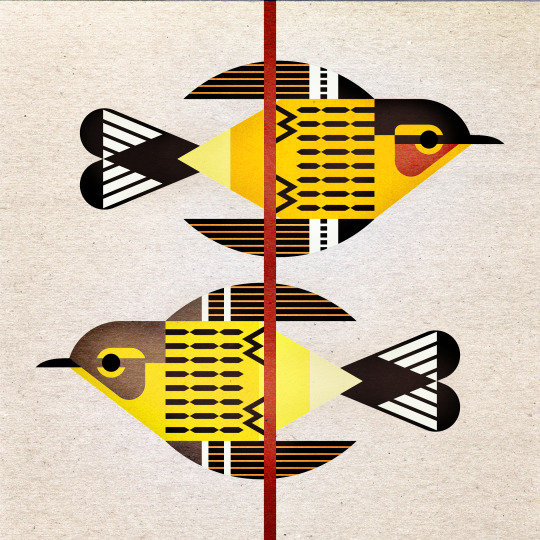
Cape May Warbler, a Bird Genoscape Project study species
248 notes
·
View notes
Text
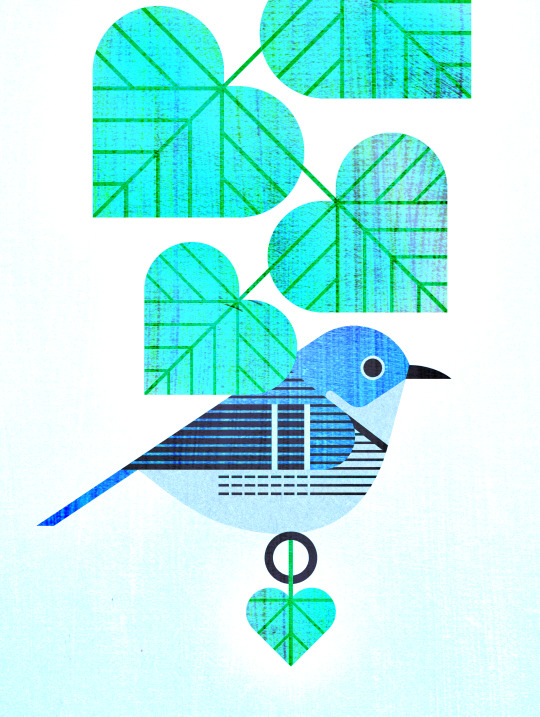
Cerulean Warbler, Setophaga cerulea, named after the sky, part of a series of illustrations for the Bird Genoscape Project
218 notes
·
View notes
Text
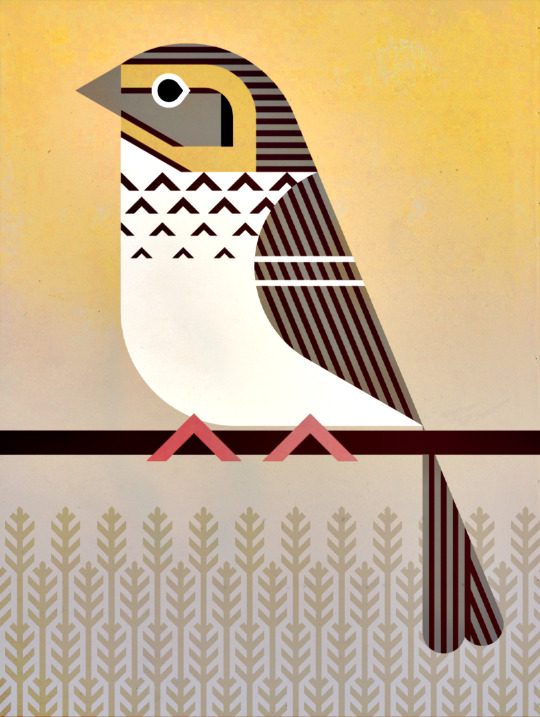
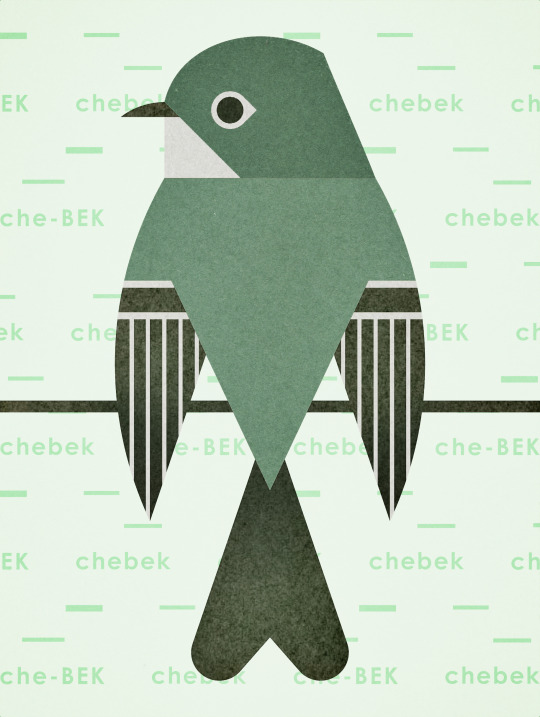

Baird's Sparrow, Least Flycatcher, and Philadelphia Vireo, Bird Genoscape Project illustrations.
159 notes
·
View notes
Text
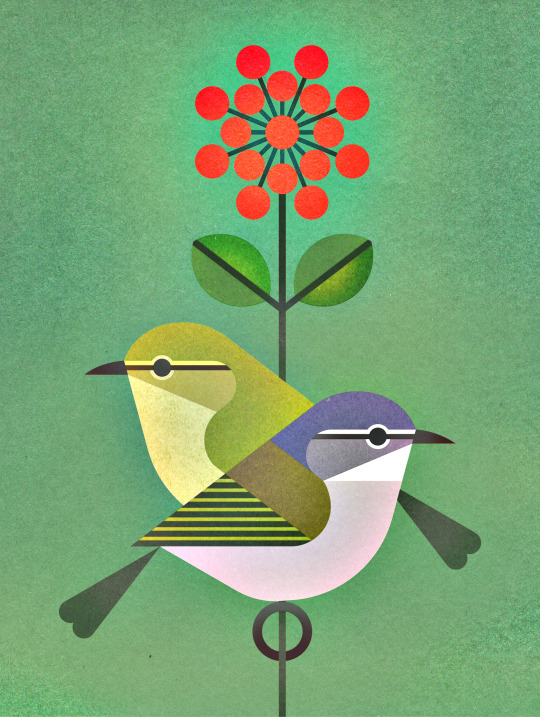
Tennessee Warbler, an illustration for Bird Genoscape Project
185 notes
·
View notes
Text

Chestnut-Sided Warbler, an illustration for the Bird Genoscape Project
182 notes
·
View notes
Text

Winter Wren, Troglodytes hiemalis
A Bird Genoscape Project species
162 notes
·
View notes
Text
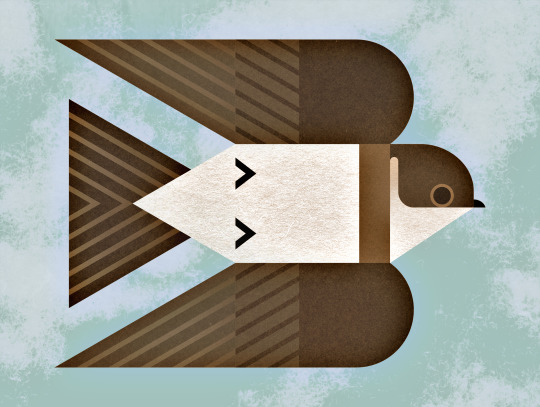
Bank Swallow, a Bird Genoscape Project species
124 notes
·
View notes
Text
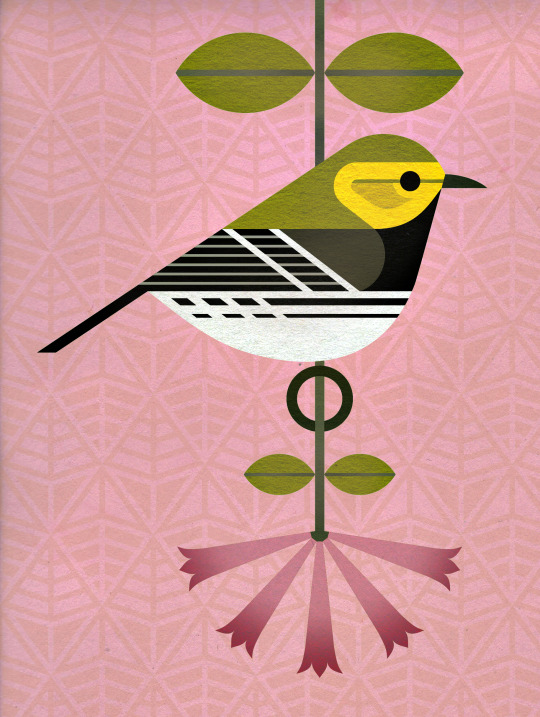
Black-Throated Green Warbler, a Bird Genoscape Project study species
110 notes
·
View notes
Text
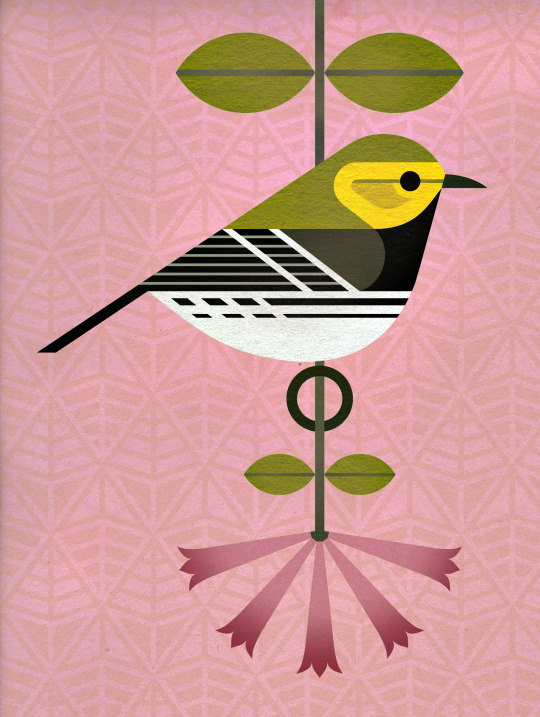
Black-throated Green Warbler, Setophaga virens, a Bird Genoscape Project study species
136 notes
·
View notes